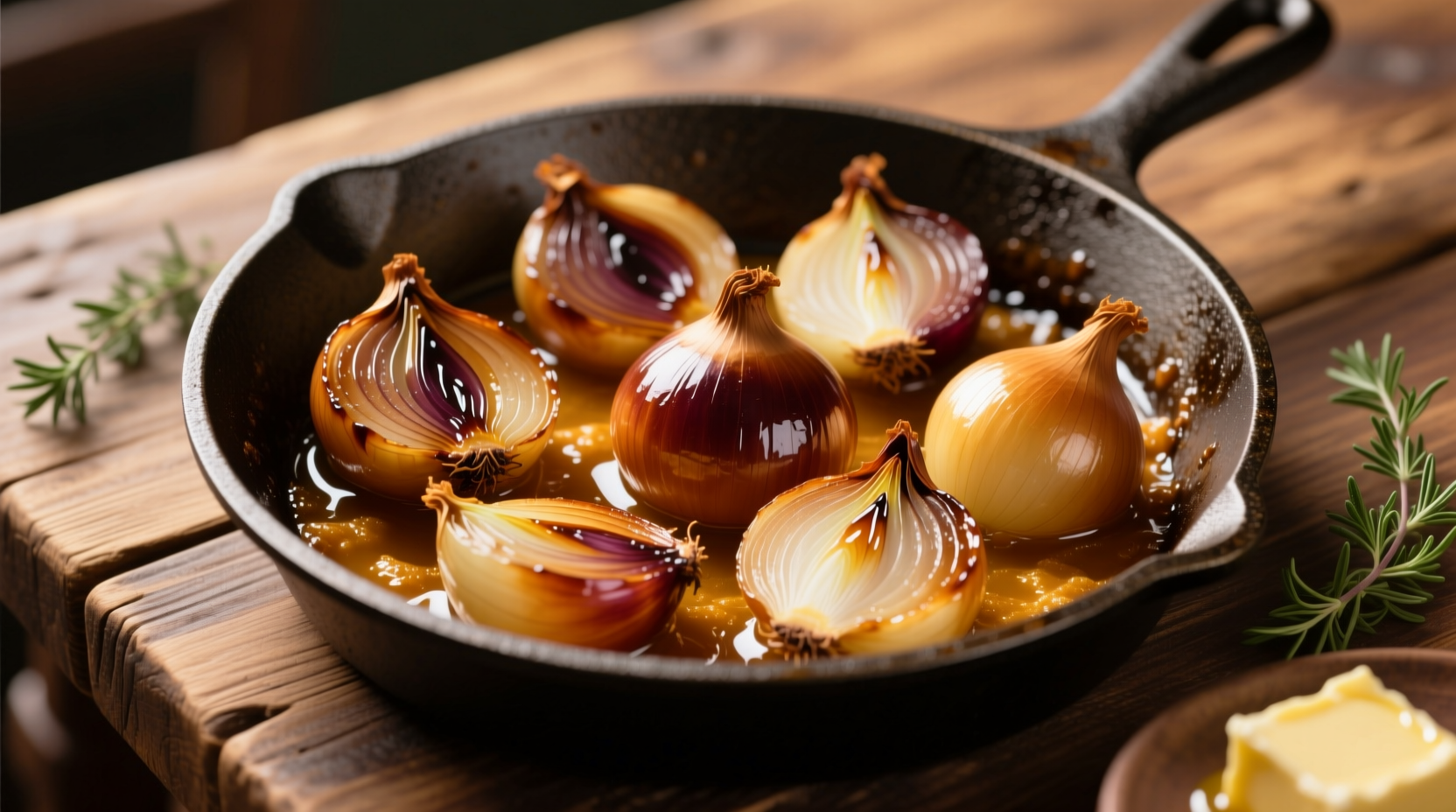Nothing transforms a simple meal like the aroma of freshly baked onion bread filling your kitchen. This versatile staple has journeyed from humble European farmhouse tables to modern artisan bakeries, evolving through centuries of culinary innovation. Whether you're craving soft sandwich bread for deli meats or a crusty boule for dipping in olive oil, understanding the science behind onion incorporation makes all the difference.
The Essential Onion Bread Foundation
Successful onion bread starts with proper onion preparation. Raw onions release moisture during baking, creating dense pockets in your loaf. Professional bakers universally agree: caramelizing onions for 25-30 minutes concentrates their natural sugars while eliminating excess water. This process develops complex flavor compounds that raw onions simply can't provide.
"The Maillard reaction during caramelization creates over 600 flavor compounds," explains Sophie Dubois, French culinary specialist. "This chemical transformation is why properly cooked onions deliver that irresistible sweet-savory depth in quality onion bread."

Step-by-Step Perfect Onion Bread
Yield: 1 large loaf | Prep: 25 min | Rise: 2 hours | Bake: 35 min
Ingredient Breakdown
- 1½ cups (350g) caramelized onions, cooled
- 3½ cups (440g) bread flour
- 1¼ cups (300ml) lukewarm water
- 2¼ tsp (7g) active dry yeast
- 2 tbsp (25g) honey
- 1½ tsp salt
- 1 large egg, room temperature
- 2 tbsp olive oil
Critical Technique Sequence
- Cool onions completely - Warm onions kill yeast (critical mistake #1)
- Mix wet ingredients first - Creates even distribution
- Knead 12-15 minutes - Develops gluten structure to support onion weight
- Second rise with onions - Ensures even flavor distribution
- Bake at 375°F (190°C) - Creates proper crust development
| Common Mistake | Professional Solution | Resulting Improvement |
|---|---|---|
| Adding warm onions to dough | Cool onions to room temperature | Prevents yeast death, ensures proper rise |
| Overloading with onions | Maintain 35% onion-to-flour ratio | Prevents dense, gummy texture |
| Skipping second rise with onions | Incorporate onions before final proof | Creates even flavor distribution |
| Baking at too high temperature | 375°F (190°C) for 35 minutes | Achieves proper crust development |
Global Onion Bread Evolution
Onion bread's journey reflects humanity's relationship with this versatile allium. Our culinary timeline reveals how different cultures adapted this simple concept:
| Era | Region | Innovation | Modern Equivalent |
|---|---|---|---|
| 1500s | Eastern Europe | Onion-studded rye loaves | Polish cebularz |
| 1700s | France | Onion focaccia with herbs | Modern pissaladière |
| 1850s | Germany | Onion rolls with caraway | Contemporary zwiebelbrötchen |
| 1940s | United States | Onion sourdough boules | Artisan bakery standards |
| 2010s | Global | Onion bread with scallions/chives | Modern fusion variations |
Regional Variations Worth Trying
French Pissaladière: This Provençal specialty features sweet caramelized onions, anchovies, and olives baked on a thin bread base. The traditional ratio of 3:1 onion-to-bread creates an open-faced tart rather than standard loaf.
German Zwiebelbrot: German bakers incorporate caraway seeds and a higher hydration dough (75%) for chewier texture. Authentic versions use red onions for subtle color variation.
American Sourdough Onion Bread: Modern artisan versions often use sourdough starter for complex tang that balances onion sweetness. The 12-18 hour fermentation develops deeper flavor profiles impossible with commercial yeast alone.
Storage Guidelines: Context Matters
Proper storage depends on your intended consumption timeline and environmental conditions:
- Room temperature (0-24 hours): Wrap in clean linen cloth - maintains crust integrity while preventing sogginess
- Refrigeration (24-72 hours): Only for sliced bread in airtight container - prevents mold but accelerates staling
- Freezing (up to 3 months): Par-bake then freeze for best results - preserves texture better than fully baked loaves
"Humidity dramatically impacts storage success," notes Dubois. "In environments above 60% humidity, bread stales 40% faster according to USDA research. Always cool completely before storing to prevent condensation."
Perfect Pairing Suggestions
Maximize your onion bread experience with these professional pairing recommendations:
- Cheese pairings: Aged cheddar, gruyère, or blue cheese complement the sweet-savory notes
- Protein matches: Roast beef, pastrami, or mushroom pâté enhance umami depth
- Soup companions: French onion soup (naturally), tomato basil, or roasted vegetable soups
- Breakfast applications: Egg sandwiches with smoked salmon or avocado toast variations
Troubleshooting Common Issues
Dense texture: Usually caused by excess moisture from improperly cooked onions or insufficient kneading. Solution: Extend caramelization time and ensure full gluten development.
Uneven onion distribution: Results from adding onions too late in the process. Solution: Incorporate during second rise for even dispersion.
Bland flavor: Indicates underdeveloped onion sweetness. Solution: Cook onions low and slow for full caramelization without burning.











 浙公网安备
33010002000092号
浙公网安备
33010002000092号 浙B2-20120091-4
浙B2-20120091-4